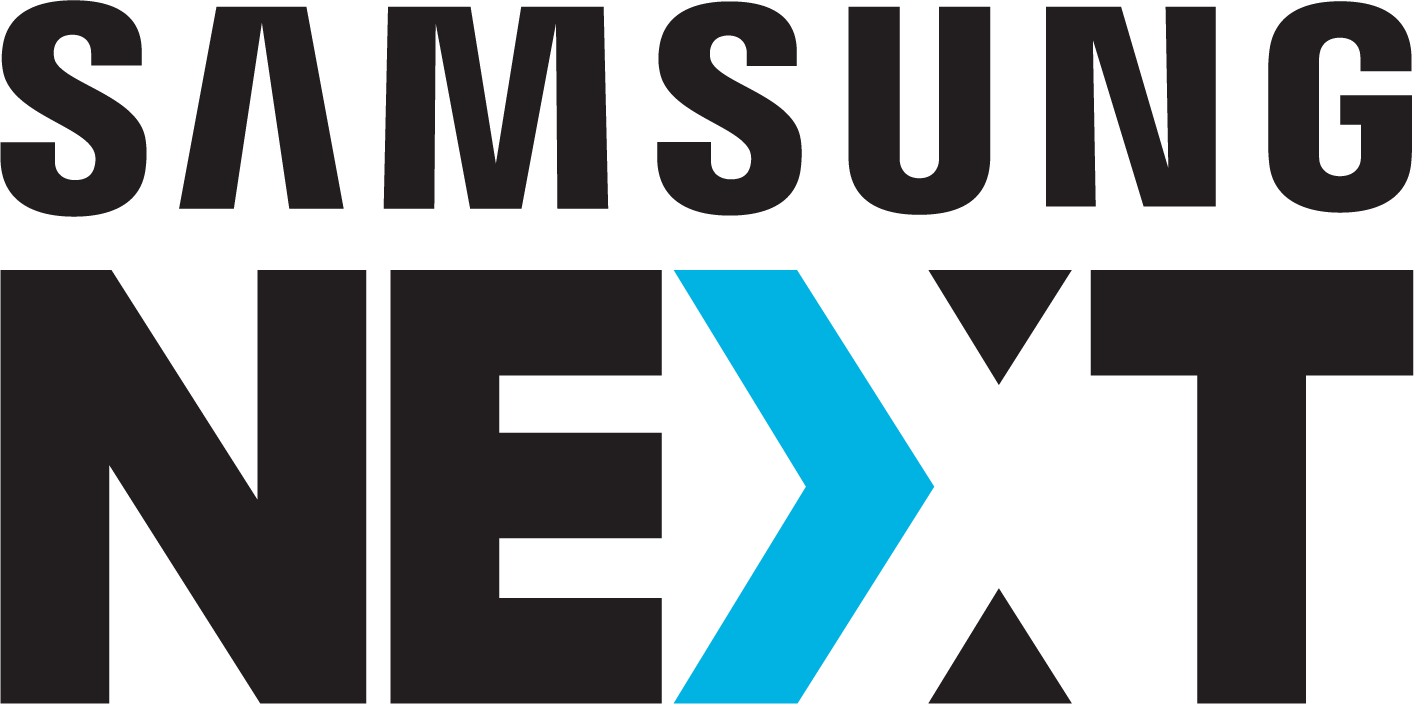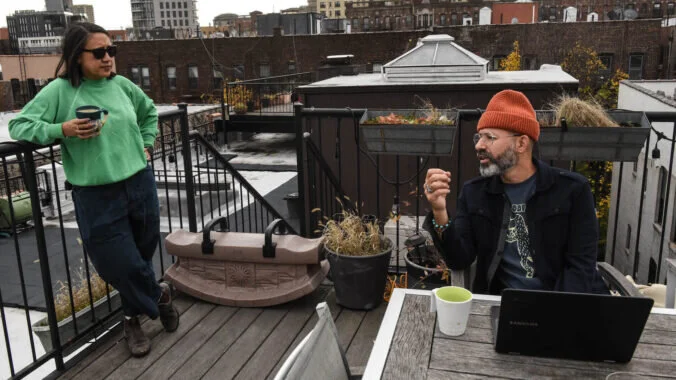Q&A: The year we learned to work from home
The emergence of the COVID-19 pandemic disrupted the way most companies did business, closing down offices and forcing workers who could to work from home. The impact has been immense on the way business gets done, as companies have had to rethink the tools, systems, and processes they use across digitally connected teams. To learn more about these trends, we spoke with Eleanor Morgan, Chief Product Officer at InVision, a digital design and development platform company that also happens to have a distributed workforce.
Tell us a little about yourself and your background.
As Chief Product Officer at InVision, I oversee both product management and design teams, and lead our product strategy and roadmap. Before InVision I was Chief Experience Officer at Casper, where I oversaw the digital and physical customer experience, and before that, I was at IDEO for 10 years. At the end of the day, I’m a designer by heart and am passionate about building great products and teams.
What is Invision? What does the company do?
InVision is a digital product design and development platform used by 100% of the Fortune 100, and brands like AmEx, Netflix, Ikea, Slack, and Virgin Atlantic. Teams big and small use our software to collaborate across the entire digital product design process.
Our platform consists of several tools that support the product design process, including Freehand, our real-time collaborative whiteboard tool, and one of our latest releases—Specs, a new kind of design document for designer and developer collaboration. We’re often known for prototyping but there is so much more to our platform. Our mission is to inspire design-driven innovation at the world’s most creative companies. We believe that great design can change the trajectory of a business and even the wellbeing of people.
We also invest a lot of care and effort into supporting and elevating the design community with our Design Better podcast, our blog Inside Design, and design community groups we organize like the Design Leadership Forum.
It’s been an exciting time for me as we’ve been releasing product updates rapidly since the spring, to respond to the changing needs of the product community, and the rising importance and urgency of digital product design and development within every organization.
What are the biggest ways that you’ve seen Covid-19 change collaboration in the professional workplace in the US?
So many trends have been accelerated with Covid-19. First, and most obviously, remote collaboration is becoming central to the way we work. It’s not possible to casually walk into someone’s office or have a conversation in the hallway. Everyone, in every discipline, is aware of the challenges of collaborating remotely, so we’re accelerating the development of parts of our platform that allow for more creative collaboration digitally.
Another macro trend is that businesses and companies are having to digitally transform at an unprecedented pace. In the first three months of Covid, we saw 10 years worth of growth in e-commerce penetration in the U.S.. Digital experiences are becoming THE central customer experience for most companies, which means digital design is becoming more strategically important. And the universe of collaborators around digital design is expanding as a result. There are more cooks in the kitchen--more product team members to coordinate with and more stakeholders to align with. Collaboration around digital design is becoming more complex. More than ever, companies need tools that support this collaboration between large, diverse groups of stakeholders.
Are these trends different globally?
There are some indications that digital transformation is possibly accelerated more in the U.S. vs. globally, but not significantly. We have so many international customers who are experiencing the same rapid change, and who are doing incredible work as they’re navigating this period of accelerated growth.
There is some discussion as to whether or not these changes in remote collaboration are situational or whether or not they reflect a fundamental change in the way companies operate.
Interestingly, research points to the fact that nearly all agile development teams will include remote work in the future, and almost 75% of organizations expect remote work to be long term or permanent for their organization. So to me, that means that these practices are here to stay, and the companies that adopt them quickly will be the ones that thrive.
Do you have general principles about remote collaboration that drive your product development at Invision?
We have a lot of the same processes that many product development teams have. But I’d say we’re very deliberate about creating frequent visibility on the work and team connection—which are especially needed in remote environments. We share work often. We have activities that encourage organic team connection like a weekly zoom happy hour, or virtual cooking classes.
Above all, we enable a tremendous amount of trust and autonomy. You need to be self-driven, organized and proactive about getting work done in a remote environment, and we have been fortunate to attract people who are extremely good at that. We have 8 principles that define our culture at InVision and one of them is “Co-ownership”. What that means is that people act as co-owners of work we do and the overall company, and are trusted as such.
How did Covid change the demand and use of your products?
Most companies saw a dip due to Covid...we are fortunate in that Covid increased our demand. We have seen significant growth from 5M to 7M InVision users, as companies have turned up the dial on digital product design and development.
I imagine that with the sudden global shift to remote collaboration, you might have started to see different user archetypes emerge, or perhaps the mix of them changed. Did you see any surprising trends once millions more people shifted to remote working?
The nature of the customer hasn’t so much changed as expanded. We saw growth in the need for our platform to support activities in the design process beyond just screen design—tools like Freehand, our real-time digital whiteboard, to help run team kickoffs, strategy sessions, brainstorming and design reviews. Those activities extend well beyond designers, and we’ve seen our audience continue to expand as a result. We see a huge mix of collaborators on our platform—everyone from marketing to IT, legal, and beyond.
In what ways did Covid change your product roadmap? What did you prioritize and deprioritize in the wake of the sudden acceleration of remote collaboration?
The pandemic didn’t so much pivot our product direction as it increased the demand for it and the urgency we applied to ensuring we were serving our customers’ needs. This meant iterating and releasing updates more frequently than ever before. As an example, we’ve launched more than 20 updates to Freehand since March, including featured templates from some incredible partners such as American Express, Atlassian, and others, which we released just a few weeks ago.
We’ve also seen increased demand for our Design System Manager (DSM) product, because of the growing need for companies to ensure consistency across digital touchpoints as they scale.
Any interesting trends or themes emerge that surprise you?
We recently took a survey with hundreds of respondents to understand the product trends from 2020 and what we all might expect from 2021. Interestingly, more than half of the respondents stated that working remotely has improved their communication skills. This definitely resonates with our experience as a remote company. A remote environment requires that you be more deliberate about how you communicate. Collaboration is a much more conscious act. Our reliance on new and better tools for communicating is increasing.
Another compelling point from the survey is that nearly half of those working at companies say that they released some product or feature in response to COVID. Whether it was medical practices releasing new ways to do online consultations, retailers designing new ways to do curbside pickup, or consumer apps helping people stay up to date through the pandemic, digital product teams have had a tremendous year to say the least.
Invision is unique to this discussion because not only do you develop products for distributed teams, you are also one of the first to start and stay distributed. You are relatively new to Invision and to fully distributed teams. What did you learn in joining a company that has been operating in this fashion for years? What was the most surprising thing you’ve learned entering this new environment?
InVision was founded as a fully distributed company nearly 10 years ago, which means we’re truly remote by design. It’s important to note how different that is from a company that just changed its structure to be remote because of the pandemic.
There is so much in place at InVision that made starting here during the pandemic easier than it would have been starting a new role elsewhere. We have organizational behaviors and practices that ensure visibility and alignment across teams and departments. Everything from written documentation, to frequent Q&A forums, to efficiency tricks like recording video walk-throughs of work we can all view asynchronously.
Most importantly, the entire team knows how important moments of spontaneity are, so you’ll often see joking around in the comments of a Google Doc, impromptu whiteboard doodling, and hilarity in the chat thread at company all-hands meetings.
The most surprising thing for me is to realize that team connection is just as strong in a remote environment.
Did Covid affect the way your team collaborated in any way?
We’re fortunate in that our way of working was not as disrupted with Covid. We have been a fully remote company from the beginning, and thus have those organizational behaviors already established. That said, like so many teams in the past 9 months we’ve had much more focus and discussion on mental health as well as inclusion in the workplace, based on all that’s happened in 2020. These discussions have been so important and have helped to build more mutual support and sense of belonging.
What are the biggest mistakes that creative teams make when working remotely?
The biggest mistake is not designing in deliberate moments of connection and co-creation. Remote work can often silo people if they’re not conscious of the need to create visibility and connection.
Collaborating is harder when you’re not in a physical space together, so you really need to design both structured and unstructured ways to connect as a team.
You also need tools that help you co-create and build together, not just talk. Otherwise, you can spend your whole day on zoom meetings talking about the work but not getting anything done. Similar to google docs, a digital whiteboard like Freehand helps people build off of each others’ work in real-time.
I can’t underscore how essential it is to have tools like this that enable generative group work sessions when you’re remote. Co-creating together not only ensures faster progress but also enables all perspectives to be heard more efficiently. And ultimately inclusive teams that integrate diverse perspectives generate better product results.

